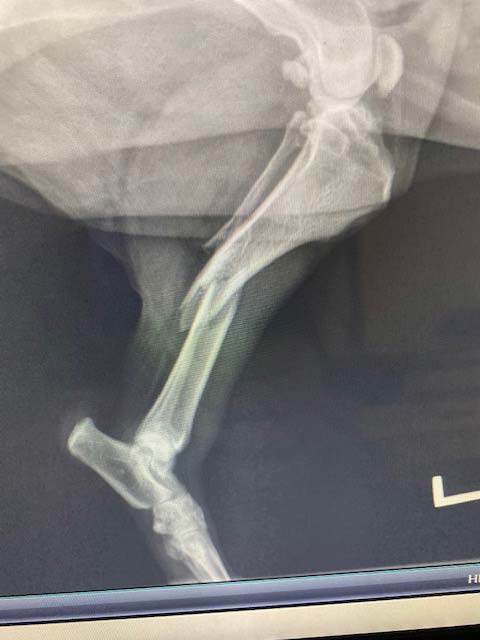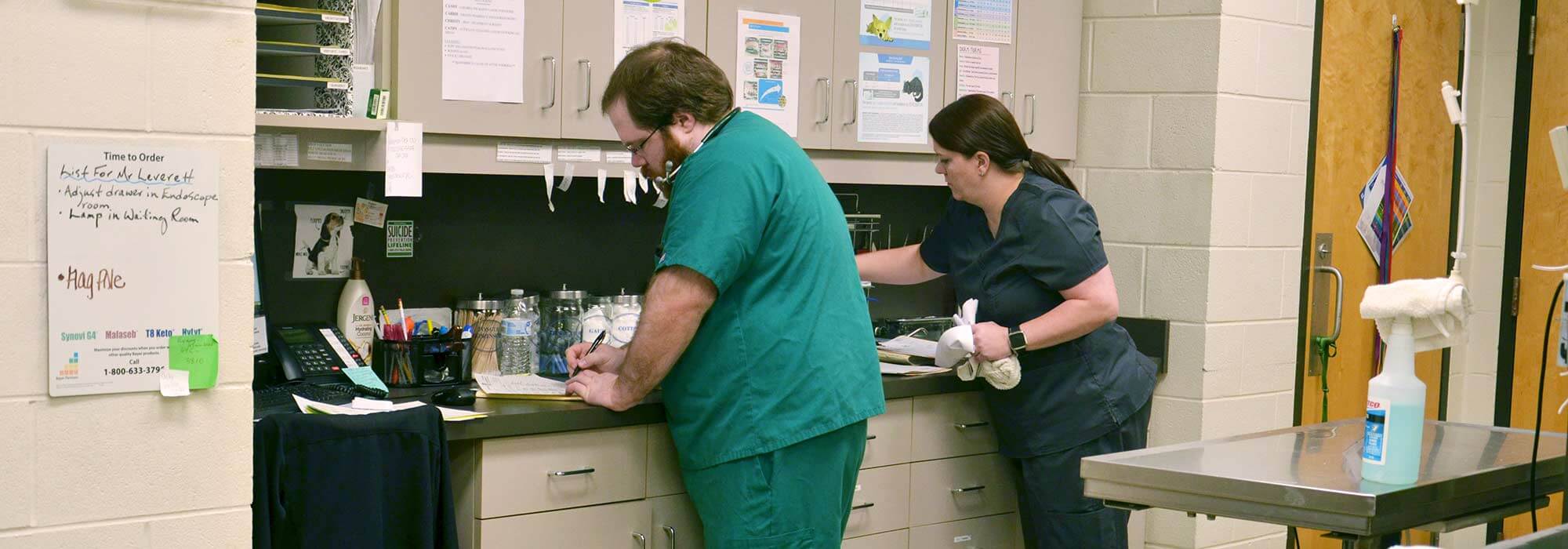Our comprehensive surgical care for cats and dogs includes orthopedic procedures, which are those involving bones, joints, muscles, and ligaments.

Our Procedures
When surgery is necessary for your pet’s condition, we will perform our pre-anesthesia testing and adhere to the strictest protocols for anesthesia safety. Common orthopedic procedures that we perform include the following:
- Fracture repair: We can set and cast (or splint) simple fractures. For badly broken bones (comminuted fractures), we use our plating equipment to maintain limb length and stability and to minimize rotational forces for proper healing.
- Cruciate ligament repair: We use an extracapsular approach, which employs bone anchors. Patients requiring TPLO or TTA procedures to repair cranial cruciate ligaments will be referred to nearby specialists.
- Femoral head and neck ostectomy (FHO): This surgical treatment is for hip disorders, including fractures, hip dysplasia, and hip luxation.

Symptoms of Orthopedic Conditions
Your pet may have suffered an obvious injury or could be silently battling a joint disease. Some symptoms to watch for include:
- Limping or abnormal gait
- Not wanting to participate in normal activities, like playtime or walks
- Difficulty rising, especially first thing in the morning
- Favoring a certain limb
- Obvious swelling in the joints
- Hesitancy to climb stairs
- Vocalizing when moving
Pain Management
Following your pet’s surgery, we will send you home with any necessary pain medications to keep your pet as comfortable as possible as he or she heals. We might also recommend laser therapy to reduce inflammation and manage pain. Changes in your pet’s diet and appropriate activities might also be suggested to help your pet maintain a proper weight and resume full range of motion.
Please call us if you suspect that your pet might have an orthopedic injury or condition.

